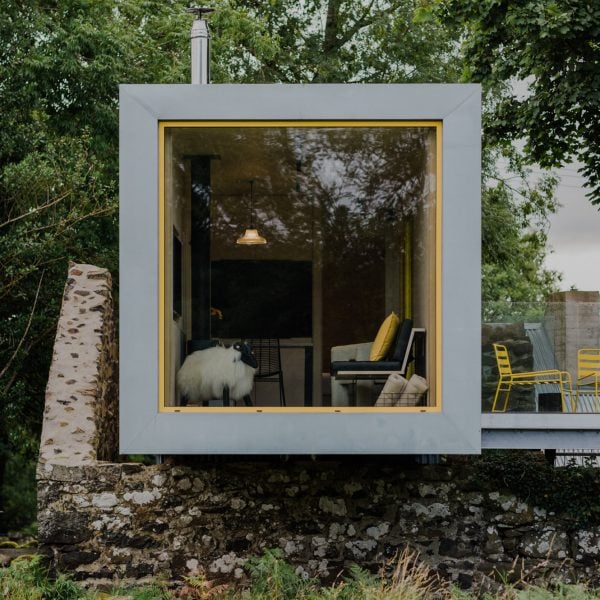Local studio Patrick Bradley Architects has added a cantilevered shipping container to ruined walls on an old farm in Northern Ireland to create a contemporary house with an annexe.
Named Barneys Ruins, the project brings a traditional small-holding settlement in Mid Ulster, known as a clachan, to modern-day standards while preserving the 200-year-old ruins of its old cottage.
Patrick Bradley Architects’ founder inherited the site from his great-great uncle Barney – after whom the project is named – and sought to revive it after years of deterioration.
With his studio, Patrick Bradley’s goal was to celebrate the clachan’s history while transforming it into a contemporary home, creating “a strong juxtaposition of old and new.
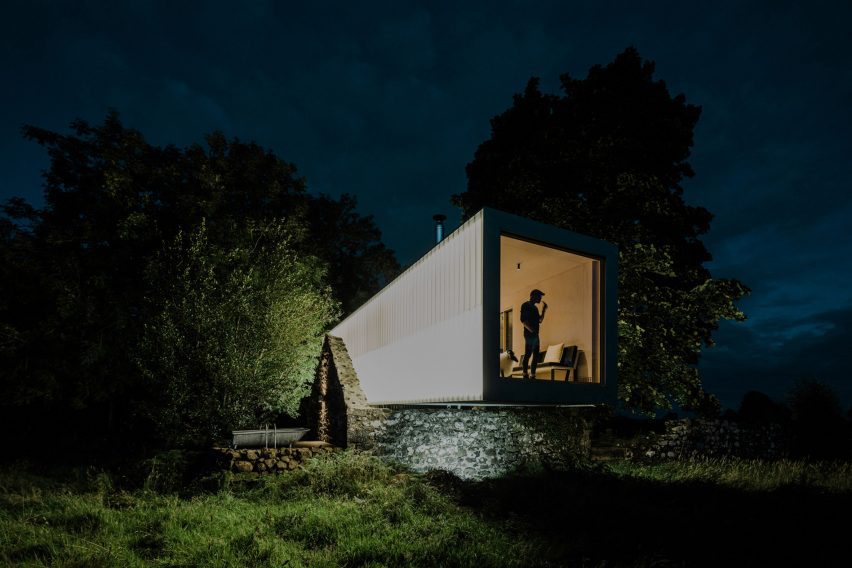
“The Bradleys have maintained a deep connection to their land over generations,” Bradley told Dezeen.
“Owning the land passed down from Barney has fostered not only an economic foundation but also a profound emotional tie – each generation has cultivated and cherished this land, nurturing a strong sense of belonging and identity rooted in their stewardship of the farms.”
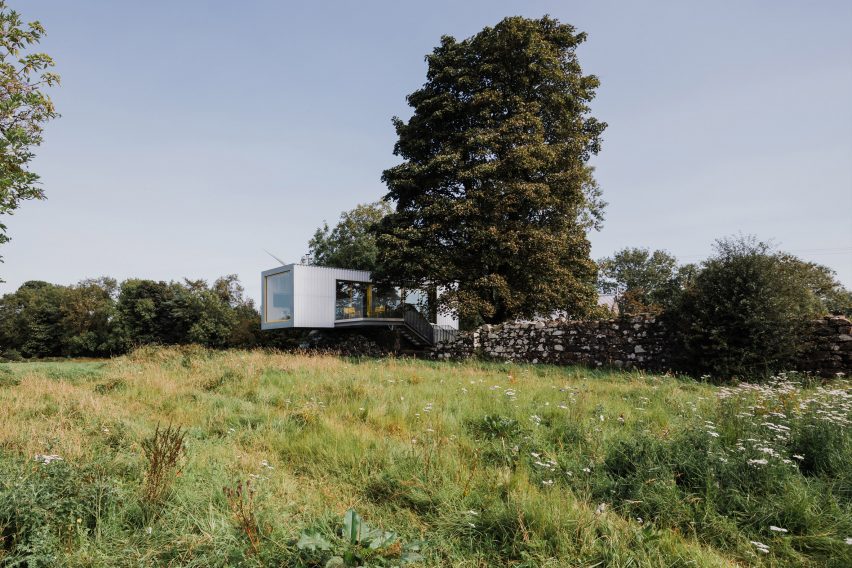
Barneys Ruins is accessed via a grated steel staircase that straddles one of the ruined walls. Alongside it, a former barn has been converted into a small annexe.
The living spaces are mostly housed in the shipping container, which was converted off-site and craned into position. It is supported by steel columns that sit within the original cottage footprint.
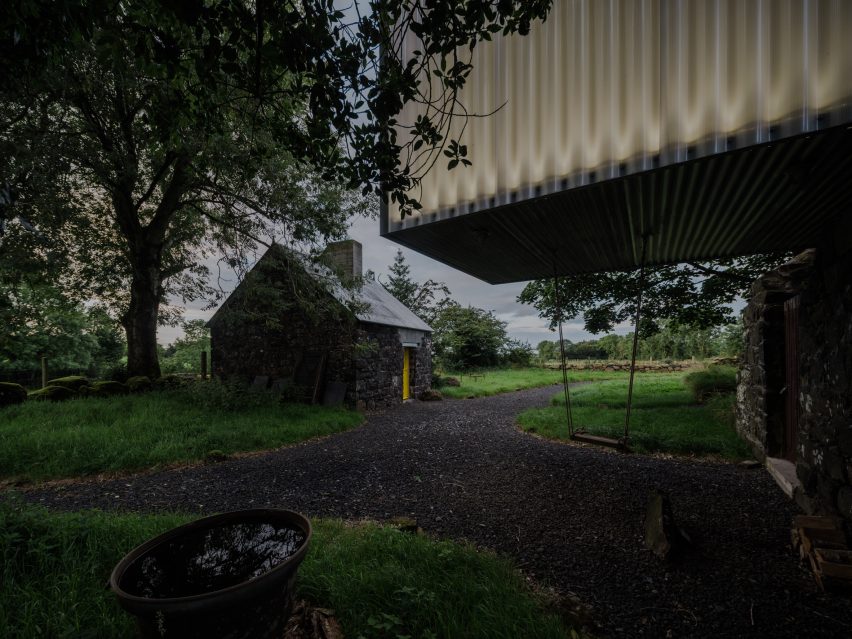
Inside, it contains an open-plan kitchen and dining space, a small bathroom and a double bedroom to the rear, all of which are finished with minimalist plywood joinery and terrazzo flooring. Below, the walls of the existing cottage enclose a utility room.
The shipping container was adapted to include large south-facing sliding doors that open onto a balcony, while a picture window frames a meadow that was rewilded to promote local biodiversity.
While repurposing the old ruins and a shipping container, the studio also prioritised existing materials where possible, including old gates, agricultural cladding and reclaimed stones.
By seamlessly integrating into the original Irish Clachan, the new building serves as a storyteller, bridging the past and present into a cohesive narrative,” said the studio.
“The clients envisioned a bold architectural statement that would starkly contrast the existing 200-year-old ruins whilst sustainability drove decisions to maximise energy efficiency and reduce the overall carbon footprint by reusing and recycling elements found on the farm,” it continued.
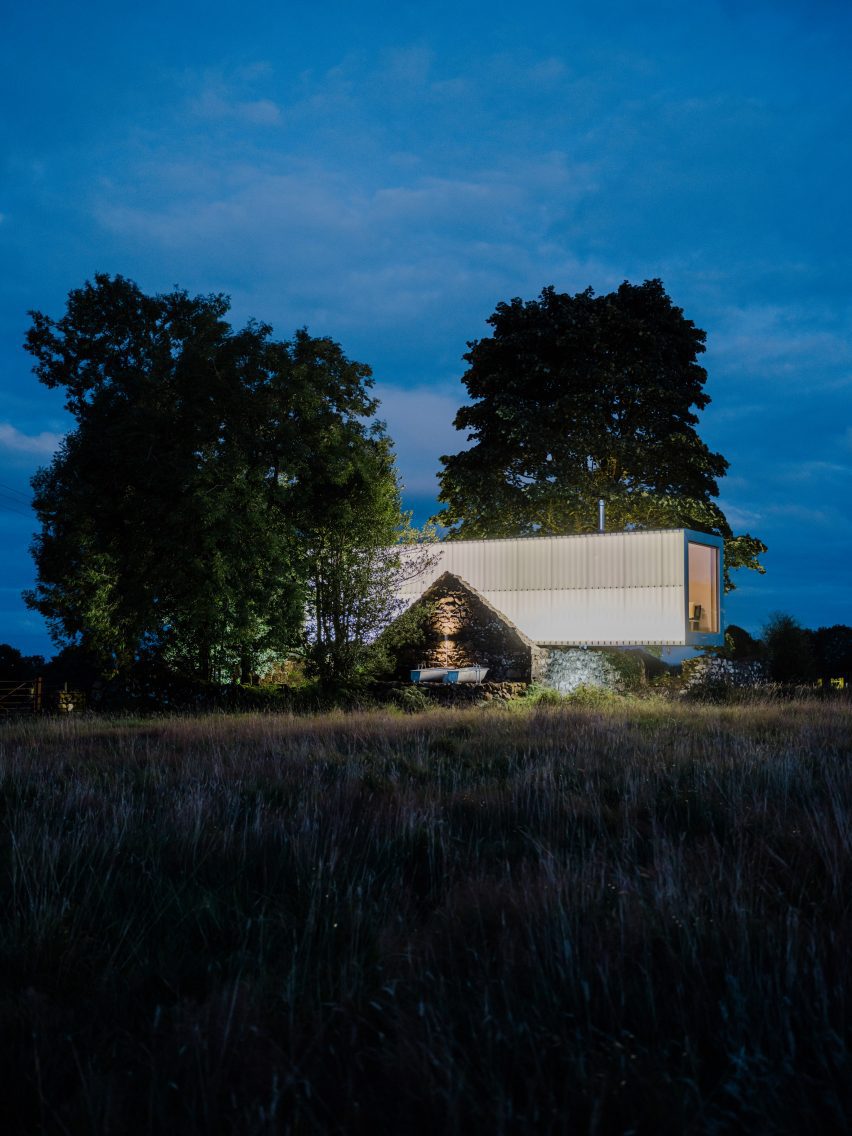
Adjacent to Barneys Ruins, the former barn has been converted into a small annexe that features a concrete fireplace and chimney breast and a small mezzanine sleeping area for guests.
In contrast to the home’s contemporary cantilevered structure, the annexe closely preserves the original character, with a galvanised corrugated steel roof that references its agricultural context.
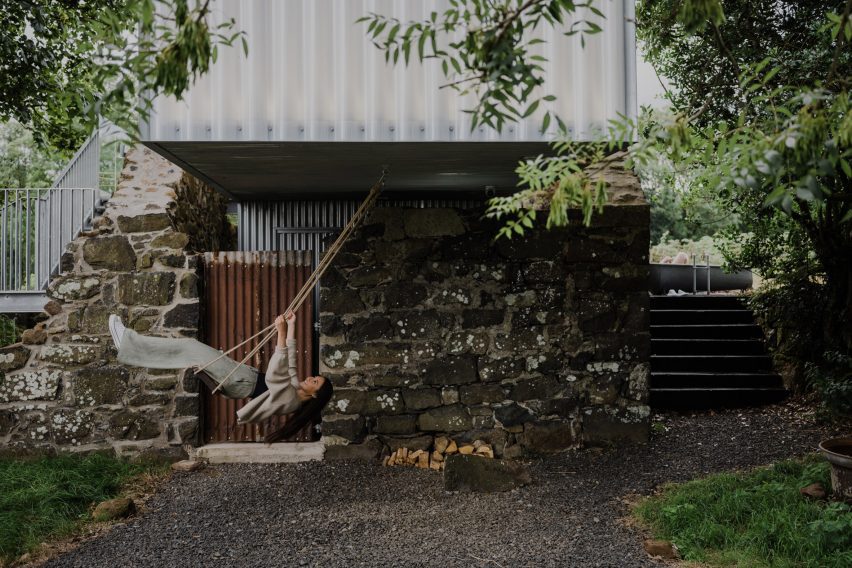
Patrick Bradley Architects envisaged Barneys Ruins as a beacon in the landscape, referencing a mature Yew Tree that sits at the heart of the local town. Strips of LED are installed behind the cladding to create the appearance of the dwelling “floating” across the landscape at night.
“While the yew stands proudly at the heart townland, the project needed to reflect the same importance, with the approach that the building would glow at night at the very heart of the townland when the yew tree would not be visible,” said the studio.
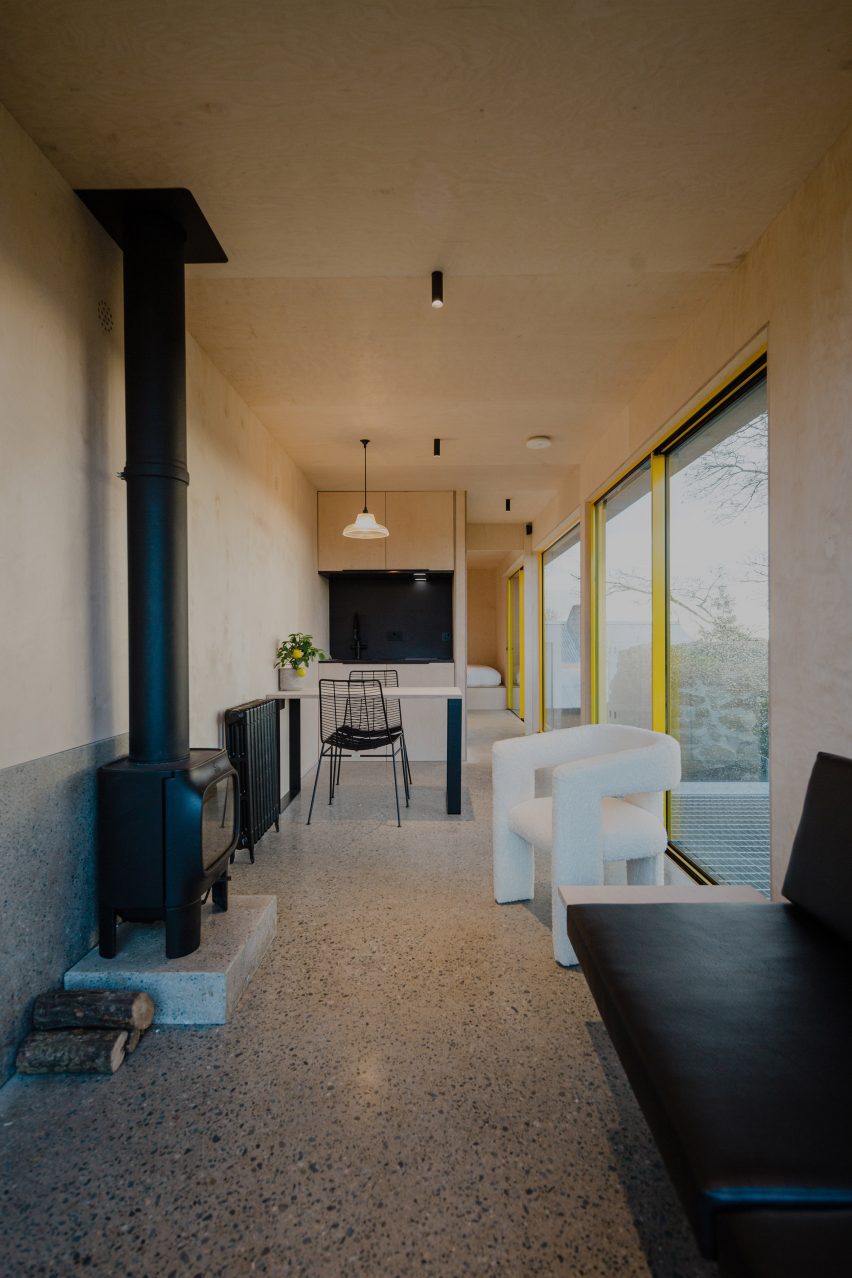
Barneys Ruins is not the first home by Patrick Bradley Architects to use a shipping container. On Bradley’s farmland, the studio repurposed four to create Grillagh Water House.
Other homes that make use of old ruins include Cuddymoss in rural Scotland by Ann Nisbet Studio and The Parchment Works in Northamptonshire by Will Gamble Architects.
The photography is by Joe Laverty Photography.

